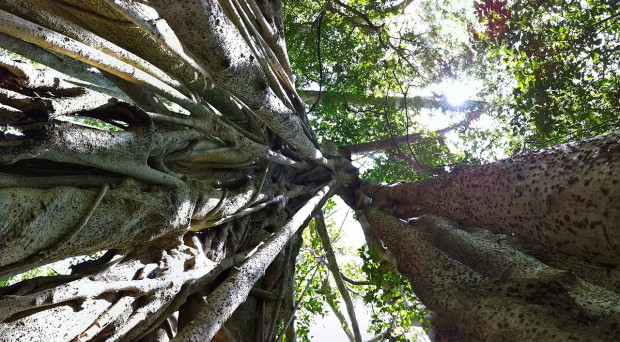
As well as reproducing and passing on their genes to their offspring (vertical gene transfer – VGT) bacteria can also pass their genes to each other by mechanisms known as horizontal gene transfer (HGT).
This allows the rapid spread of advantageous genes, such as genes for antibiotic resistance, from bacterium-to-bacterium and because of this it may play a larger role in bacterial evolution than the more usual VGT. Knowing HGT plays such a large role in bacteria, it is important to understand to what extent it happens in animals so we can understand what role it has in evolution.
The role of HGT in animals is controversial. Early studies of HGT in humans predicted that many genes were involved, but subsequent research (including papers here and here) found problems with the method used and the idea was widely discredited.
More recently work in invertebrates has found HGT between parasites (bacteria and fungi) and their hosts (insects and nematode worms), but studies have focussed on specific pairings or, at most, small numbers of closely related species.
In our recent paper in Genome Biology, we chose to look at species from around the animal kingdom and in every species we looked at we found evidence of HGT. We found some HGT that had previously been detected, but we also identified many new ‘foreign’ genes and the amount was much greater than seen before. This suggests that rather than being confined to simpler, single-celled organisms (e.g. bacteria) or to specific relationships (e.g. host-parasite pairings) HGT occurs in all species.
In humans, we confirmed 17 genes, previously-reported in the early study as foreign, were acquired by horizontal gene transfer.
In humans, we confirmed 17 genes, previously-reported in the early study as foreign, were acquired by HGT, and identified 128 additional foreign genes that had not been reported in that study. This included a small number of genes, such as the ABO blood group gene, that were identified in subsequent papers as having been acquired by vertebrates through HGT. The majority of the genes were related to enzymes involved in metabolism.
Levels of HGT were much lower than those seen in bacteria, where its estimated as many as 81% of all genes may have been involved in HGT at some point, so its likely that HGT has a smaller role in animal evolution than in bacterial evolution.
We saw variations in the amount of HGT seen in each species, but interestingly there was less difference between vertebrates and invertebrates than between individual species in either group. We also found evidence that, on average, the vertebrate HGT happened longer ago than the invertebrate HGT and may play a lesser role in more recent vertebrate evolution than in recent invertebrate evolution.
When analysing genes we commonly compare their sequence to each other and if the sequence is related we assume they come from a common origin. When the studied genes come from different species we assumed this means that the different species are related and the common origin of the gene was in their common ancestor. However, taking HGT into account, it may be that the common origin of the gene was actually in a completely different organism and that it was transferred into each of the different species.
During our research we have seen cases where genes that have been assumed to be closely related actually derive from different species, with one inherited by the usual VGT and the other from HGT. This matters because we infer information about the past genes and species, which we cannot study because they no longer exist, based on our models of what modern genes and species are related to them. This study means we need to re-evaluate our evolutionary models to take into account the contribution of HGT.
HGT also offers us a chance to look at the mechanisms by which genomes evolve. When a new gene is acquired by HGT it may be altered to fit its new species. It is likely that the mechanisms that do this are the same mechanisms used in the evolution of any new gene, so by looking at HGT we can gain insights into all genes.
- The origins of our ‘foreign’ genes - 13th March 2015
Comments